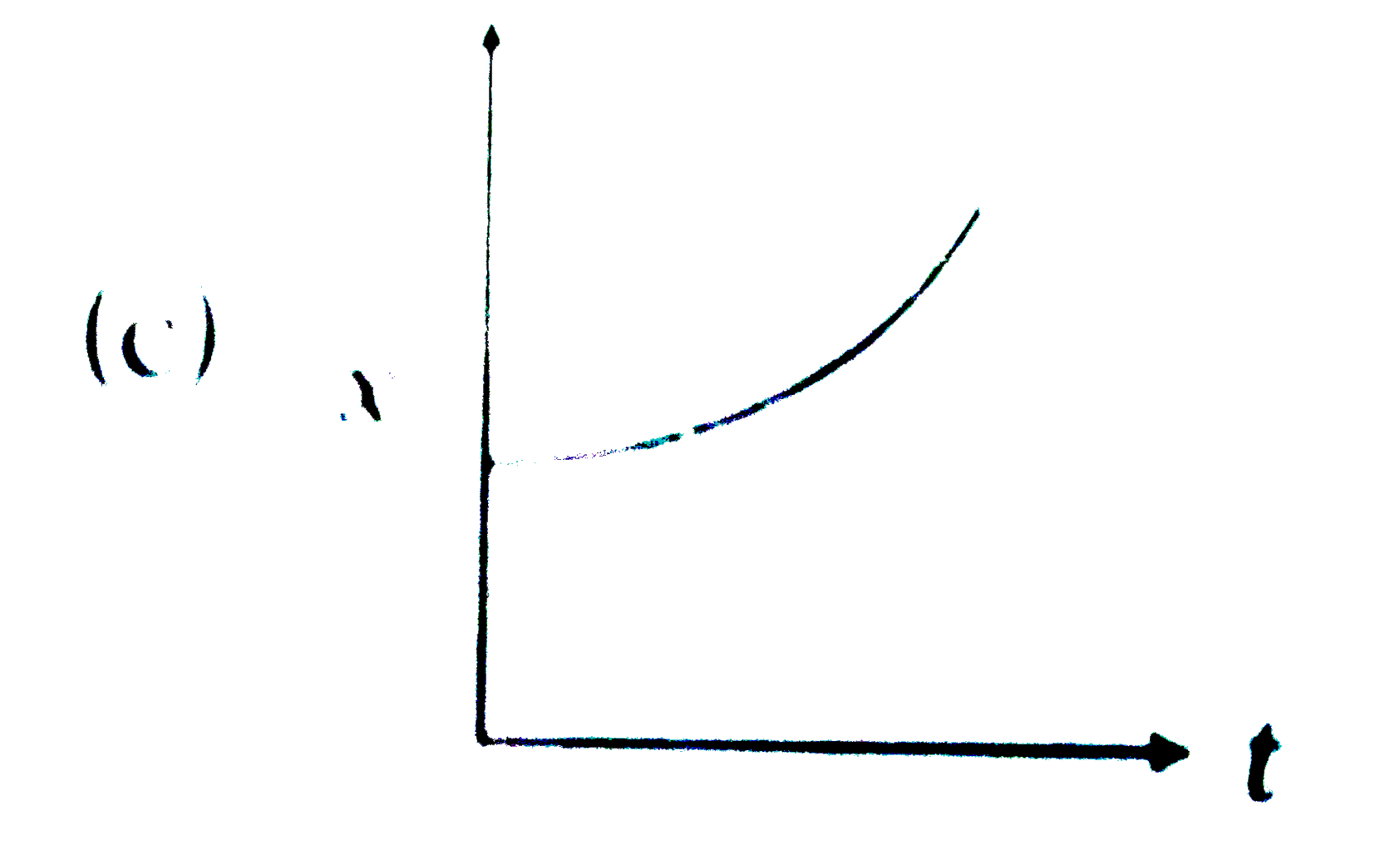The distance travelled by a particle in a straight line motion is directly proportional to t^(1/2) ,where t = time elapsed.The nature of motion is
Step by step video & image solution for The distance travelled by a particle in a straight line motion is directly proportional to t^(1/2) ,where t = time elapsed.The nature of motion is by Physics experts to help you in doubts & scoring excellent marks in Class 12 exams.
Updated on:21/07/2023Similar Questions
The velocity of a particle moving in a straight line is directly proportional to 3/4th power of time elapsed. How does its displacement and acceleration depend on time?
View SolutionThe displacement of a body is proportional to t3, where t is time elapsed. What is the nature of acceleration - time graph of the body?
View Solution
Knowledge Check
The distance travelled by a particle in a straight line motion is directly poroportional to t1/2, where t is the time elapsed.
AIncreasing accelerationBDecreasing accelerationCIncreasing retardationDDecreasing retardationThe motion of a particle in straight line is an example of
Aconstant velocity motionBuniformly acceleration motionCnon-uniformly acceleration motionDzero velocity motionThe displacement x of a particle in a straight line motion is given by x=1−t−t2. The correct representation of the motion is
A B
B C
C D
D
The position of a particle moving on a straight line is proportional to the cube of the time elapsed. How does the acceleration of the particle depend on time elapsed?
View SolutionAssertion : Distance-time graph of the motion of a body having uniformly accelerated motion is a straight line inclined to the time axis.
Reason : Distance travelled by a body having uniformly accelerated motion is directly proportional to the square of the time taken.
View SolutionDistance travelled by particle at any time t is given by S=t2+6t+8 Speed of particle at any time t is
View SolutionKinetic energy of a particle moving in a straight line is proportional to the time t. The magnitude of the force acting on the particle is :
View SolutionThe distance s travelled by a particle moving on a straight line in time t sec is given by s=2t3−9t2+12t+6 then the initial velocity of the particle is
View Solution